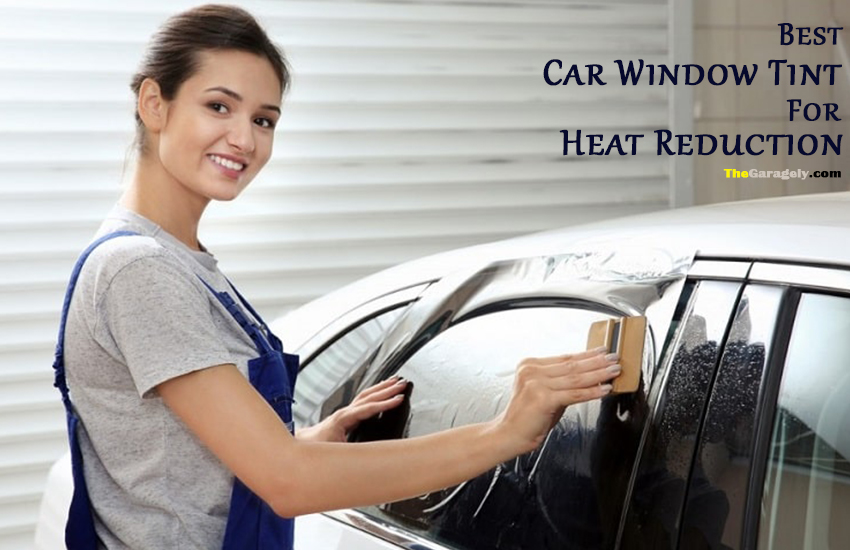
The sun’s rays are causing your car’s interior to heat up, causing your skin to burn. Do you have a problem with strangers peeping into your car or stalking your vehicle? You’re not the only one who has this problem, and there are a number of other reasons why you would wish to tint your vehicle with the best car window tint for heat reduction.
A simple tint or curtain won’t accomplish what you’re searching for. You need the best car window tint and privacy in your automobile. Window tinting is a no-brainer for any vehicle, whether it’s a car, a jeep, or even a pickup truck. It’s difficult to choose the appropriate one.
Don’t worry, I’ve done the research, shifted through the goods and expert evaluations, and come up with a complete packing list at the conclusion to help you get your hands on one from the shop.
Quick Navigation
- 1 Top 5 Best Car Window Tints for Heat Reduction
- 2 1. MotoShield Pro – Premium Precut Ceramic Window Tint
- 3 Pros
- 4 Cons
- 5 2. LEXEN 2Ply Premium Carbon 20″ X 100FT Roll Window Tint
- 6 Pros
- 7 Cons
- 8 3. Mkbrother Heat & UV Block Professional Window Tint
- 9 Pros
- 10 Cons
- 11 4. MotoShield Pro Premium 2mil Ceramic Window Tint for Auto
- 12 Pros
- 13 Cons
- 14 5. MotoShield Pro Premium Professional 2mil Ceramic Window Tint
- 15 Pros
- 16 Cons
- 17 Video Review of TOP 5 Best Car Window Tint
- 18 Car Window Tints: The Most Common Kinds
- 19 Dyes on Film
- 20 A film with a Metallic Sheen
- 21 Film of Carbon
- 22 Porcelain Sheet
- 23 How Do You Decide?
- 24 Car Window Tint for Heat Reduction: Buying Guide
- 25 Pre-Cut or Rolled, Which One Is Better?
- 26 Percentage of Visible Light Passing Through
- 27 UV Protection
- 28 Dissipation of Heat
- 29 Durability
- 30 Step-By-Step Instructions for Installing or Replacing Window Tints
- 31 Prepare the Windows of Your Car
- 32 Cut Your Tint to Size
- 33 Stick with the Tint
- 34 FAQ About Window Tint for Heat Dissipation
- 35 Final Words
Top 5 Best Car Window Tints for Heat Reduction
1. MotoShield Pro – Premium Precut Ceramic Window Tint
Motorshield Pro has developed a ceramic window tint specifically for four-door cars and pickup trucks, like this one. Even the quarter and vent windows are included in its scope of coverage. As a bonus, you may get pre-cut film for your car windows that are easier to apply.
There is a wide range of tint options available on the spec sheet, from 5% to 70%. On the front windshield, 70 percent tint can be applied; on the back, 5 percent tint is applied; and perhaps 15 percent of tint is applied to the door windows.
Since it can filter up to 99 percent of UV rays and lower the temperature by up to 25°F, you don’t have to worry about heat and radiation as it is one of the Best Car Window Tints for Heat Reduction.
Pros
- Ceramic window tinting of the highest quality.
- 99% of UV light is blocked.
- Long-lasting
- Installing is a breeze thanks to the pre-cut film.
- Suitable for sedans
- The signals are unaffected.
- Reduces the temperature of the body
Cons
- It’s pricey
2. LEXEN 2Ply Premium Carbon 20″ X 100FT Roll Window Tint
Tinted windows aren’t new, and you’ll need to buy a new one every time they become scratched or torn. This LEXEN Computer Pre-Cut Complete Tint Kit 100ft Tint Rolls is a great option if you’re looking for a sumptuous solution without the inconvenience of running to the store. In fact, there is enough space to cover the entire car, no matter how big or small the size.
UV rays are the most bothersome to automobile owners since they burn both on the outside and the inside of a vehicle. This is the greatest vehicle window tint for UV protection since it blocks 99 percent of UV rays thanks to its superior carbon substance. As a bonus, it doesn’t grow brittle or lose its hold with time; instead, it adheres to the glass.
Traditional tints are mostly responsible for causing signal interference when driving, and this is a problem that affects our mental health the most. Premium carbon construction, however, prevents signal breaks from occurring. A walkie-talkie, satellite radio reception, internet, or even a cell phone can all be used to communicate.
Scratches and wear-and-tear are also a concern. Although the tint is scratch-resistant and may be pulled apart if it is rubbed or dragged hard enough, it has good scratch resistance. As a result, be careful to use a light touch.
In addition, you may want to think about how to install it and where to position it on the windows. Because this tint roll is easy to cut, and dry/wet heat shrinkable, you may say goodbye to those concerns.
Pros
- Anti-UV ray-blocking dark color
- Effortless setup
- Films of epic proportions roll out of theaters
- The signals are unaffected
- Cut and trim with ease
Cons
- Heat resistance might be improved by using ceramics in the construction of the product
3. Mkbrother Heat & UV Block Professional Window Tint
If so, you’re looking for a tint film that has a well-known brand. The phrase “window tint block heat” could be something you’d like to hear echoed in your head. For those searching for it, the MKBROTHER brand is a good choice.
Using adhesive layers, MKBROTHER’s film is definitely the best UV Rejection Tint since it plays by the rules. When it comes to protecting your skin from the sun’s harmful rays, this hue can block 96% to 98% of UVA and UVB.
It also reduces the heat reduction rating by 50 percent so that you may enjoy a peaceful drive even on sweltering summer days.
Furthermore, don’t you desire a clearer picture of the situation? Regular reflecting tint blocks sunlight in a more annoying manner and hinders you from gaining a clearer picture than with regular tint. This tint, on the other hand, has a 1.5-millimeter-thick layer that is invisible to the naked eye while yet allowing you to see the outside world well.
As you drove for lengthy periods, you must have encountered problems with a signal blockage that made you feel like you were clinging to straws. Because of its non-metalized composition, this tint blocks out all signal interference like a ninja. In your automobile, you’ll be able to get the same continuous signal frequency.
However, the process of putting it in place will be the most talked about. However, this item is a cinch to put together. To clean the windows, all you need is a bucket of water and a bar of soap. If you’re applying too quickly, the film can kink, and you’ll miss out on the opportunity.
Pros
- Easy to put in place
- Ink with a green tinge
- Budget-friendly
- Exceptional resilience to heat
- There are no signal problems
Cons
- If you squeeze it too hard, it may kink
4. MotoShield Pro Premium 2mil Ceramic Window Tint for Auto
This is a high-end MotorShield Pro product, but because it’s rolled, it’s a little different. In addition, it is at least 100 feet long and 2 millimeters thick when unrolled. Also, it isn’t only for automobiles; it can be employed in both residential and business properties.
How well does it work in practice? It can block 99 percent of UV rays with a 50 percent rejection of solar energy. You won’t have to use the air conditioning as much because the temperature inside your car will be reduced by half, protecting your automobile from dangerous UV rays.
However, it is more costly than most of the window tints we’ve included in the comparison table. If you don’t know how to properly attach the rolled film, it might also be an issue.
Pros
- It employs nanotechnology
- Ceramics of the highest grade
- Dissipates the heat within the body
- It may be used in many ways
- It doesn’t turn purple or fade with time
- Friendly to the environment
Cons
- Expensive
5. MotoShield Pro Premium Professional 2mil Ceramic Window Tint
What about a ceramic film that reduces heat, glare, and UV radiation more effectively than other types of tints? That’s what MotoShield Pro Tint Film offers, in particular a comprehensive collection of window films that is both safe and well-balanced.
The Motosheild has numerous layers of sun resistance, including 99 percent UV and IRR protection, glare rejection of 39 percent, and finally, 53 percent TSER. They used to significantly increase the temperature of your vehicle, but not any longer.
What about the quality of the construction? Nano-particles that are non-metallic and non-conductive are directly responsible for ceramic films’ outstanding construction quality. Using these particles, you can lower the temperature of your car’s interior by more than 25 degrees Fahrenheit.
You won’t have to worry about signal interference because it doesn’t include any metal, carbon, or dye components. You’ll be able to follow GPS with ease and consistency because of the reliable signal transmission.
This product, in my opinion, provides the greatest vehicle window tint percentage, ranging from 5% to 75% VLT, to pick from. Each of your car’s windows can be tinted in a variety of ways.
Pros
- Multiple hues of VLT are available
- Color stability was ensured
- Longevity in use
- Not a color that becomes purple
- Nano-particles were used to provide the greatest possible outcome
Cons
- Installing it on your own is really difficult
- There isn’t enough for a large vehicle or SUV on a single roll
Video Review of TOP 5 Best Car Window Tint
Car Window Tints: The Most Common Kinds
Dyes on Film
Essentially, dyed window film is made up of a polyester coating linked to an adhesive layer and a layer of dye. In terms of UV radiation and heat reduction, it does the job. You’ll have good visibility even if you’re inside since it will seem black from the outside yet not reflect sunlight glare.
Car window tints made of colored films are the most common since they are the least expensive. Window films that have been dyed have the propensity to become purple when exposed to high temperatures over an extended period of time, or microscopic bubbles may form on the film layer over time.
A film with a Metallic Sheen
Like dyed films, this form of tint uses a thin metallic coating to generate shade on a car’s windows. Protects against UV radiation, reflects light, and lowers the temperature. The metalized film, on the other hand, makes the windows more resistant to breakage or scratching.
Despite this, the sole drawback is that it’s composed of metal. When it comes to radio waves and electrical communications, metal is a no-no. If you have a metallic layer on your windshield, don’t be shocked if your phone or antenna signal is weak.
Film of Carbon
Carbon-based window tint blocks out UV rays and keeps your car cooler. It has a matte surface and less glare than metallic film, making it ideal for low-light photography. The windows will be shielded from up to 40% of the sun’s infrared rays with this technology. That means you’ll likely require less air conditioning to maintain a comfortable temperature in your home throughout the sweltering months of the year.
If you use a carbon film, you won’t have to worry about interference with radio or mobile phone reception. Unlike colored film, it will not lose its color over time. Then then, a carbon window tint film will set you back a few additional dollars.
Porcelain Sheet
There is no dye, carbon, or metal in ceramic film tint, which is a modern window tinting method. Infrared light, which creates heat, may be blocked by up to 99 percent of UV radiation and half of infrared light. Ceramic shade film, on the other hand, is more durable and reduces glare than other window tints.
Like carbon film, it doesn’t interfere with radio, mobile phone, or GPS system signals. It’s fairly uncommon to pay hundreds of dollars to have ceramic film installed on a car’s windows.
How Do You Decide?
Ceramic film is the best on the market if you don’t mind the expense. If you don’t want your automobile to fade or glare, this is the best option for you. In addition, you’ll be able to see better at night and throughout the day.
Carbon tint film, on the other hand, is the closest thing to ceramic tint, although it will not endure longer or block more infrared radiation than the latter. You may also use metalized film if you are driving an ancient automobile without any devices such as cell phones or GPS systems.
For the lowest-cost alternative for privacy, dyed tint is an excellent choice; just don’t expect it to match ceramic film tint.
Car Window Tint for Heat Reduction: Buying Guide
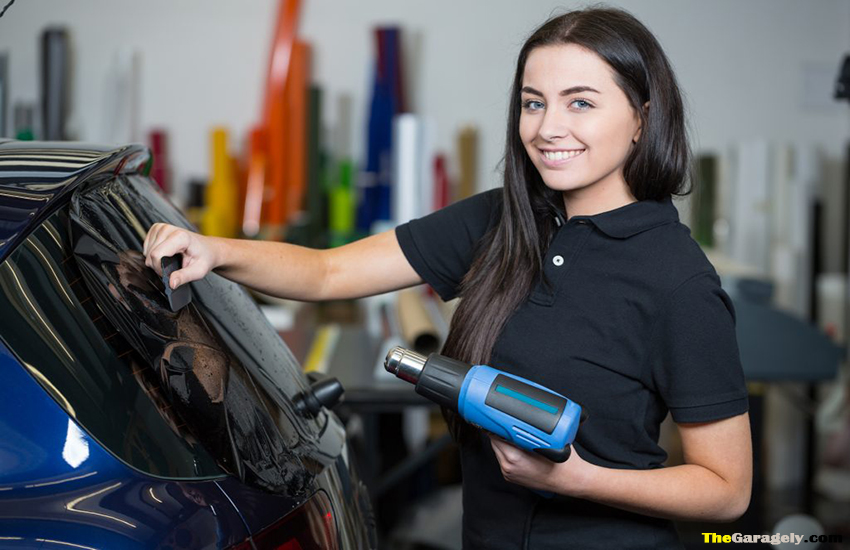
We have your back with a buying guide on the Best Car Window Tint for Heat Reduction so that you can choose the correct one for your car. So, let’s explore the following points:
Pre-Cut or Rolled, Which One Is Better?
In the majority of cases, a pre-cut automobile window film is precisely sized and trimmed to fit your windows. That means you’ll need to take measurements of your windows and give them to the vendor in order for them to send you a product that will fit perfectly. Installing this way is significantly more straightforward.
Pre-cut window film, on the other hand, is generally more expensive because the cutting costs are included.
If you want to cut your own pieces, you can acquire colored rolls of film, but be sure to request enough to cover your needs.
Percentage of Visible Light Passing Through
Tinted window films affect the amount of light that may pass through your vehicle’s windows, known as VLT or Visible Light Transmission. In general, the smaller the amount of VLT, the darker your car’s interior.
With a 5 percent VLT tint, for example, just 5 percent of the light outside may pass through your car’s windows. Because it filters half of the outside light, windows tinted with 50% VLT are brighter than those tinted with 5 percent VLT.
There are a wide variety of window films on the market that contain between 5% and 50% VLT. 5 percent tint is the best option if you want the darkest tone. In fact, even if you don’t tint the windshield, 5 percent VLT will make it extremely difficult to drive at night, especially if you have weak eyesight or low-lumen lighting.
50 percent VLT is another option for those who don’t want a window shade that is very dark or too light. The main problem with a 50% window tint is that it feels like someone can easily see what is inside your automobile. If privacy is your primary issue, it could work in the front but not so much in the rear.
If you prefer, you can get away with a window tint that lets in just 30% or 35% of the light; this will still keep the outside world from seeing what’s inside and allow you to drive safely at night.
You must, of course, take into account the legislation, which sets the permissible limit. Although the legal limit in certain areas is only 5 percent, in other places, it is 25 percent or 30 percent. Whatever you do, be sure you don’t get into trouble with the authorities.
UV Protection
Your dashboard, leather seats, or whatever material covers your seats will be negatively affected by UV rays if you haven’t already heard. That’s not to mention the fact that you don’t want to get sunburned in your automobile.
What do you need to do to fix this? UV protection is critical, so choose the film that provides the most. Because most automobile window tints can block up to 99 percent of dangerous UV rays, it’s good news. It is possible that UV protection may be poorer in dyed and metalized films than in ceramic films.
Read More: Top Coat F11 (Hand-On) Reviews of 2021 with Applying Method
Dissipation of Heat
A window tint that blocks out most of the light does not always indicate that the tint is effective at decreasing heat. In fact, a dark window tint with a VLT of only 5 percent will do nothing to dissipate heat.
For heat reduction, how can you choose the finest window tint for your car? What you do is check a metric called “total solar energy rejection,” which is straightforward (TSER). Do not mistake it for UVA/UVB protection or the proportion of visible light that passes through the lens.
UV, visible light transmission, and infrared (IR) are combined to compute total solar energy rejection by automobile window tinting.
While UV and visible light transmission (VLT) is significant, the quantity of infrared or solar radiation transferred through the windows should be your primary concern if you wish to minimize heat.
Just keep in mind that the higher the percentage of total solar energy rejection (TSER), the more efficient the window tint film will be in dispersing heat. As a result, an 80 percent TSER window tint will be better at reducing heat than a lower-tinting 50 percent TSER tint.
This doesn’t imply that your car won’t overheat in the summer, even if it has a high total solar energy rejection (TSER). It simply implies that the inside temperature will rise more slowly if all of the windows are tinted.
Durability
How long can you expect your car window tint to remain without fading or bubbles? The price, the guarantee, the brand, and the type of vehicle window tint should all be taken into consideration before purchasing anything.
When it comes to tinted window film, the more expensive the product, the less likely it is that it will last as long. Most long-lasting window films are produced and supplied by a well-known brand. This is an additional benefit.
If you are still unsure about the product’s long-term viability, look for a warranty of at least two years. There are some companies that give warranties of up to a lifetime.
Keep in mind the importance of the sort of window tint that you choose. Ceramic window tint currently outlives colored, carbon, and metallic tint film in terms of life expectancy. A little pricey, but worth every penny.
Step-By-Step Instructions for Installing or Replacing Window Tints
Prepare the Windows of Your Car
Remove any stickers or decals from the windows before applying window tint. Then use some soap and water to clean the windows. Dry the windows with a rag once you’ve cleaned them thoroughly.
Cut Your Tint to Size
Using rolled tint necessitates cutting and measuring your tint. Decide which side contains the glue before you measure. A little piece of tint may be cut off the roll and pressed onto a window. Remove the surplus tint from the window until the tint is snugly positioned.
Stick with the Tint
Using a hose, wet the window. Gently peel aside the tint’s backing and apply it. Take your time and keep pushing until you get rid of all of the water bubbles. Keep the edges of the tint even.
FAQ About Window Tint for Heat Dissipation
With regard to today’s investigation of the best window tint for reducing heat, as well as the sort of window tint described above, Whether you’re looking for Ceramic Window Film or Metalized Window Tint, we’ve got you covered. The ceramic window tinting craze has also spread to the automotive world.
More than ten years. Suppose you’ve previously purchased high-quality window tint. Furthermore, it was correctly set up. This window tinting process date will be a distant memory when the time comes for your next tinting appointment.
For our current investigation on the best car window tint for heat reduction and the sort of tint stated above, see below. Metalized Window Tint and Ceramic Window Film are both excellent options, and they may be used in a variety of ways. Window tinting with ceramic is also quite popular and stylish in the automobile community right now.
When it comes to driving in the United States, it all depends on where you live. Car window tint/shade laws may differ from state to state. You may be hit with an on-the-spot fee if your state doesn’t allow for certain adjustments. There is no outright prohibition on window tinting, though.
Did you notice a few air bubbles forming in your tint a few days or a week after installation? Don’t let yourself become down on yourself. If you’ve hired an expert to do the job, you may expect it to arrive, although the quantity may vary. What causes bubbles to form? The air and dust layer is to blame in the majority of instances. If you’re tinting over a bit of dust that’s still in the window, you’re creating air bubbles that are causing the spot.
Final Words
When it comes to keeping your car cool in the summer, nothing beats the best car window tint for heat reduction. Comfortable driving and privacy will be yours, thanks to the tint.
Being here, I can safely assume that you have established your preferences at this point. There are various factors to keep in mind when purchasing tint, such as making sure it doesn’t become scratched, peel or fade away over time.
Riders have a safe journey!
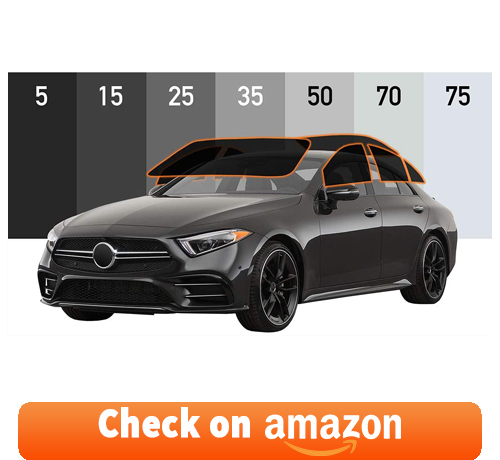
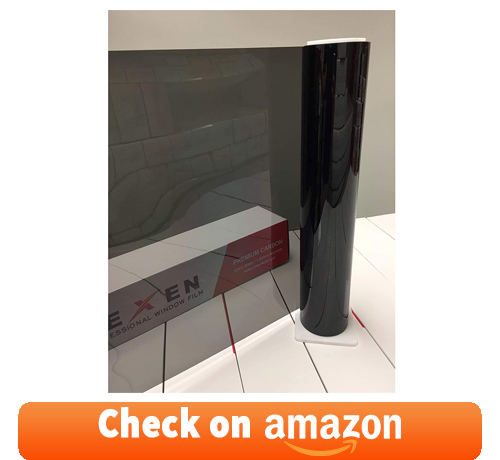
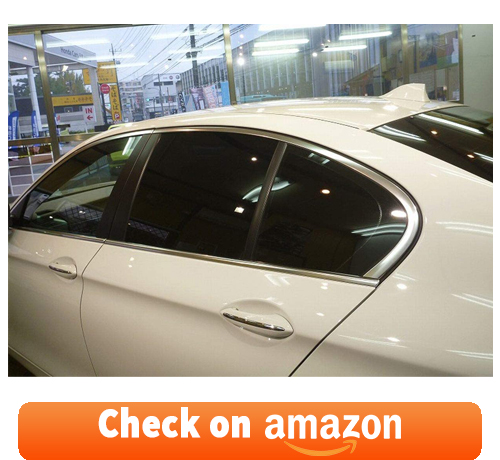
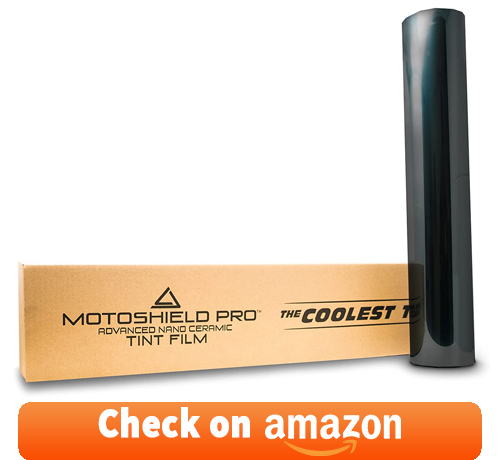
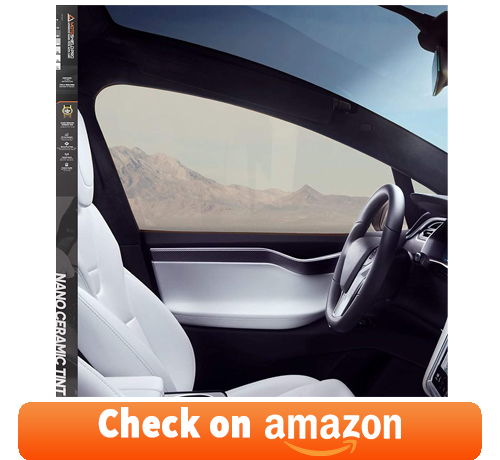
Leave a Reply